
Scholarly Literature
This is a database of scholarly literature that concentrates currently on natural and engineered selfish genetic elements (gene drives). The latest are shown here.
Disclaimer>

|
A confinable female-lethal population suppression system in the malaria vector, Anopheles gambiaeA. L. Smidler, J. J. Pai, R. A. Apte, H. M. Sánchez C, R. M. Corder, E. Jeffrey Gutiérrez, N. Thakre, I. Antoshechkin, J. M. Marshall and O. S. Akbari, Science Advances, 9:eade8903. 2023.
Malaria is among the world?s deadliest diseases, predominantly affecting Sub-Saharan Africa and killing over half a million people annually. Controlling the principal vector, the mosquito Anopheles gambiae, as well as other anophelines, is among the most effective methods to ... Keywords: Aedes aegypti, optimal control, wolbachia |
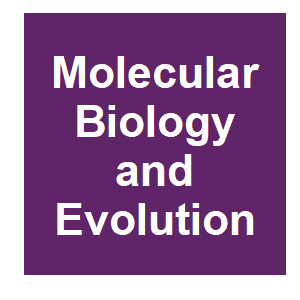
|
The evolutionary history of Drosophila simulans Y chromosomes reveals molecular signatures of resistance to sex ratio meiotic driveC. Courret, D. Ogereau, C. Gilbert, A. M. Larracuente and C. Montchamp-Moreau, Mol Biol Evol, 2023.
The recent evolutionary history of the Y chromosome in Drosophila simulans, a worldwide species of Afrotropical origin, is closely linked to that of X-linked meiotic drivers (Paris system). The spread of the Paris drivers in natural populations has elicited the selection of drive ... Keywords: Aedes aegypti, optimal control, wolbachia |

|
Meiotic drive of noncentromeric loci in mammalian meiosis II eggsD. M. Silva and T. Akera, Curr Opin Genet Dev, 81:102082. 2023.
The germline produces haploid gametes through a specialized cell division called meiosis. In general, homologous chromosomes from each parent segregate randomly to the daughter cells during meiosis, providing parental alleles with an equal chance of transmission. Meiotic drivers ... Keywords: Aedes aegypti, optimal control, wolbachia |
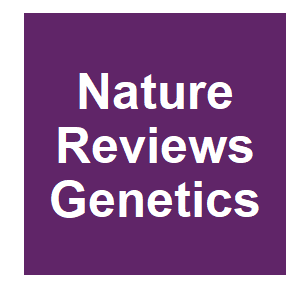
|
Steering and controlling evolution — from bioengineering to fighting pathogensM. Lässig, V. Mustonen and A. Nourmohammad, Nature Reviews Genetics, 2023.
Control interventions steer the evolution of molecules, viruses, microorganisms or other cells towards a desired outcome. Applications range from engineering biomolecules and synthetic organisms to drug, therapy and vaccine design against pathogens and cancer. In all these ... Keywords: Aedes aegypti, optimal control, wolbachia |

|
Novel Conservation Strategies to Conserve Australian MarsupialsS. Legge, M. Hayward and A. Weeks, American and Australasian Marsupials, 2023.
The Australian marsupial fauna has been devastated in the past 250 years, mainly due to impacts from invasive mammalian predators (cats and foxes), although other threats such as invasive herbivores, habitat loss and fragmentation, changes to fire regimes, and now climate change ... Keywords: Aedes aegypti, optimal control, wolbachia |

|
Wolbachia -mediated resistance to Zika virus infection in Aedes aegypti is dominated by diverse transcriptional regulation and weak evolutionary pressuresE. C. Boehm, A. S. Jaeger, H. J. Ries, D. Castañeda, A. M. Weiler, C. C. Valencia, J. Weger-Lucarelli, G. D. Ebel, S. L. O'Connor, T. C. Friedrich, M. Zamanian and M. T. Aliota, bioRxiv, 2023.
A promising candidate for arbovirus control and prevention relies on replacing arbovirus-susceptible Aedes aegypti populations with mosquitoes that have been colonized by the intracellular bacterium Wolbachia and thus have a reduced capacity to transmit arboviruses. This reduced ... Keywords: Aedes aegypti, optimal control, wolbachia |

|
The haplolethal gene wupA of Drosophila exhibits potential as a target for an X-poisoning gene driveLawler C., D. , Hernandes, N., Nunez, A. K. P., Bhide, S., Baxter, S. and Robin, C., bioRxiv, 2023.06.23.546292. 2023.
A synthetic gene drive that targets haplolethal genes on the X-chromosome can skew the sex ratio towards males. Like an X-shredder strategy it does not involve homing and that has advantages including the reduction in gene drive resistance allele formation. We examine this ... Keywords: Aedes aegypti, optimal control, wolbachia |

|
Impacts of sex ratio meiotic drive on genome structure and function in a stalk-eyed flyJ. A. Reinhardt, R. H. Baker, A. V. Zimin, C. Ladias, K. A. Paczolt, J. H. Werren, C. Y. Hayashi and G. S. Wilkinson, Genome Biology Evolution, 2023.
Stalk-eyed flies in the genus Teleopsis carry selfish genetic elements that induce sex ratio meiotic drive (SR) and impact the fitness of male and female carriers. Here, we assemble and describe a chromosome-level genome assembly of the stalk-eyed fly, Teleopsis dalmanni, to ... Keywords: Aedes aegypti, optimal control, wolbachia |

|
MGSurvE: A framework to optimize trap placement for genetic surveillance of mosquito populationC. H. Sánchez, D. L. Smith and J. M. Marshall, bioRxiv, 2023.
Genetic surveillance of mosquito populations is becoming increasingly relevant as genetics-based mosquito control strategies advance from laboratory to field testing. Especially applicable are mosquito gene drive projects, the potential scale of which leads monitoring to be a ... Keywords: Aedes aegypti, optimal control, wolbachia |

|
Do sex-linked male meiotic drivers contribute to intrinsic hybrid incompatibilities? Recent empirical studies from flies and rodentsJ. Kitano and K. Yoshida, Current Opinion in Genetics and Development, 81:102068. 2023.
Intrinsic hybrid incompatibility is one of the important isolating barriers between species. In organisms with sex chromosomes, intrinsic hybrid incompatibility often follows two rules: Haldane’s rule and large-X effects. One explanation for these two rules is that sex ... Keywords: Aedes aegypti, optimal control, wolbachia |

|
Developing methods for chilling, compacting, and sterilizing adult Aedes aegypti (Diptera: Culicidae) and comparing mating competitiveness between males sterilized as adults versus pupae for sterile male releaseD. A. Tussey, R. Morreale, D. O. Carvalho, S. Stenhouse, A. M. Lloyd, D. F. Hoel and D. A. Hahn, Journal of Medical Entomology, 2023.
The yellow fever mosquito, Aedes aegypti L., can transmit several pathogens responsible for human diseases. With insecticide resistance development becoming a concern, alternative control strategies are needed for Ae. aegypti. Sterile insect technique (SIT) is an increasingly ... Keywords: Aedes aegypti, optimal control, wolbachia |

|
Regulatory logic of endogenous RNAi in silencing de novo genomic conflictsJ. Vedanayagam, C. J. Lin, R. Papareddy, M. Nodine, A. S. Flynt, J. Wen and E. C. Lai, PLOS Genetics, 19:e1010787. 2023.
Although the biological utilities of endogenous RNAi (endo-RNAi) have been largely elusive, recent studies reveal its critical role in the non-model fruitfly Drosophila simulans to suppress selfish genes, whose unchecked activities can severely impair spermatogenesis. In ... Keywords: Aedes aegypti, optimal control, wolbachia |
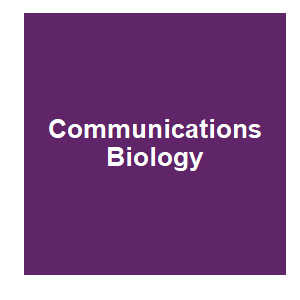
|
Combining two genetic sexing strains allows sorting of non-transgenic males for Aedes genetic controlC. Lutrat, M. Burckbuchler, R. P. Olmo, R. Beugnon, A. Fontaine, O. S. Akbari, R. Argilés-Herrero, T. Baldet, J. Bouyer and E. Marois, Communications Biology, 6:646. 2023.
Chemical control of disease vectoring mosquitoes Aedes albopictus and Aedes aegypti is costly, unsustainable, and increasingly ineffective due to the spread of insecticide resistance. The Sterile Insect Technique is a valuable alternative but is limited by slow, error-prone, and ... Keywords: Aedes aegypti, optimal control, wolbachia |
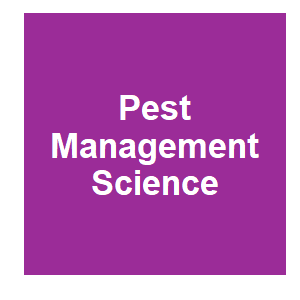
|
Effects of radiation on the fitness, sterility and arbovirus susceptibility of a Wolbachia-free Aedes albopictus strain for use in the Sterile Insect TechniqueD. J. Zhang, S. Yan, H. Yamada, Y. Wu, G. Wang, Q. D. Feng, D. Paerhande, H. Maiga, J. Bouyer, J. Qian, Z. D. Wu and X. Y. Zheng, Pest Management Science, 2023.
BACKGROUND: The sterile insect technique (SIT) is a green and species-specific insect pest control technique that suppresses target populations by releasing factory-reared, radio-sterilized males into the wild. Once released, it is important to be able to distinguish the released ... Keywords: Aedes aegypti, optimal control, wolbachia |

|
CRISPR-based gene drives generate super-Mendelian inheritance in the disease vector Culex quinquefasciatusT. Harvey-Samuel, X. Feng, E. M. Okamoto, D.-K. Purusothaman, P. T. Leftwich, L. Alphey and V. M. Gantz, bioRxiv, 2023.06.12.544656. 2023.
Culex mosquitoes pose a significant public health threat as vectors for a variety of diseases including West Nile virus and lymphatic filariasis, and transmit pathogens threatening livestock, companion animals, and endangered birds. Rampant insecticide resistance makes ... Keywords: Aedes aegypti, optimal control, wolbachia |
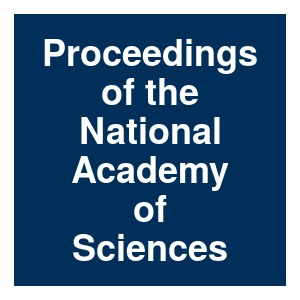
|
CRISPR/Cas9-based split homing gene drive targeting doublesex for population suppression of the global fruit pest Drosophila suzukiiA. K. Yadav, C. Butler, A. Yamamoto, A. A. Patil, A. L. Lloyd and M. J. Scott, Proc Natl Acad Sci U S A, 120:e2301525120. 2023.
Genetic-based methods offer environmentally friendly species-specific approaches for control of insect pests. One method, CRISPR homing gene drive that target genes essential for development, could provide very efficient and cost-effective control. While significant progress has ... Keywords: Aedes aegypti, optimal control, wolbachia |

|
CRISPR-mediated germline mutagenesis for genetic sterilization of Anopheles gambiae malesA. L. Smidler, D. G. Paton, G. M. Church, W. R. Shaw and F. Catteruccia, bioRxiv, 2023.06.13.544841. 2023.
Rapid spread of insecticide resistance among anopheline mosquitoes threatens malaria elimination efforts, necessitating development of alternative vector control technologies. Sterile Insect Technique (SIT) has been successfully implemented in multiple insect pests to suppress ... Keywords: Aedes aegypti, optimal control, wolbachia |
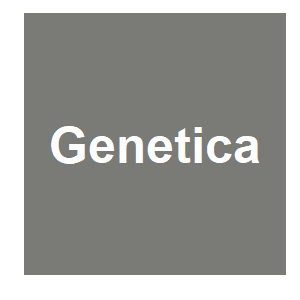
|
Sequence and expression analysis of the spermatogenesis-specific gene cognates, wampa and Prosα6T, in Drosophila suzukiiQ. Xia, K. Tariq, D. A. Hahn and A. M. Handler, Genetica, 2023.The sterile insect technique (SIT) is a highly effective biologically-based method for the population suppression of highly invasive insect pests of medical and agricultural importance. The efficacy of SIT could be significantly enhanced, however, by improved methods of male ... Keywords: Aedes aegypti, optimal control, wolbachia |

|
The attitudes of young adults towards mammalian predator control and Predator Free 2050 in Aotearoa New ZealandL. Dickie and F. Medvecky, Australasian Journal of Environmental Management, 2023.
Predator Free 2050 (PF2050) is an ambitious goal that aims to remove three types of invasive mammals from New Zealand by 2050. It will require a significant amount of funding, research, and support. Young adults will have an important role to play for this programme to be ... Keywords: Aedes aegypti, optimal control, wolbachia |

|
Modeling emergence of Wolbachia toxin-antidote protein functions with an evolutionary algorithmJ. Beckmann, J. Gillespie and D. Tauritz, Front Microbiol, 14:1116766. 2023.
Evolutionary algorithms (EAs) simulate Darwinian evolution and adeptly mimic natural evolution. Most EA applications in biology encode high levels of abstraction in top-down population ecology models. In contrast, our research merges protein alignment algorithms from ... Keywords: Aedes aegypti, optimal control, wolbachia |

Contact
David O’Brochta
Foundation for the
National Institutes of Health
geneconvenevi@fnih.org
RSS

